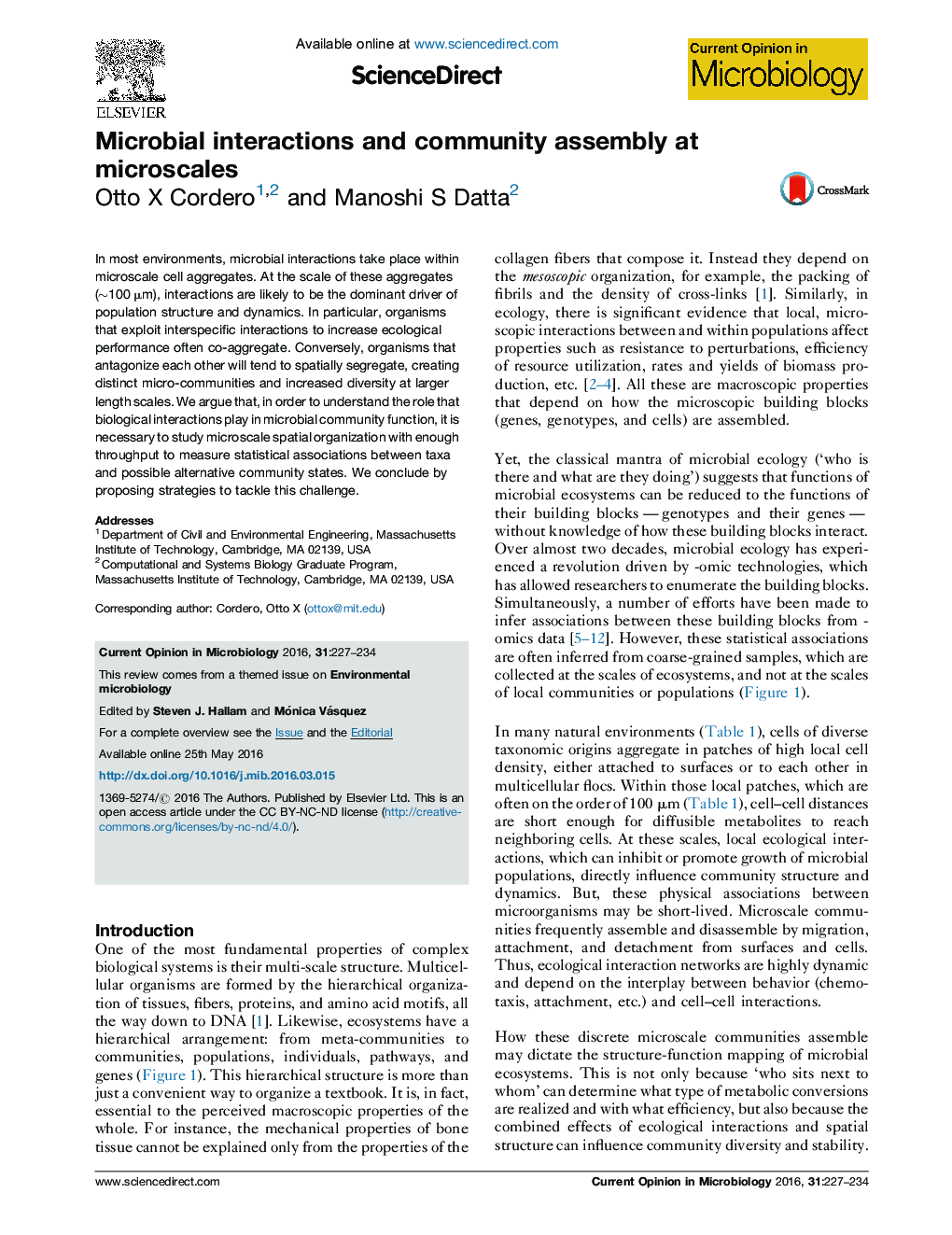| Article ID | Journal | Published Year | Pages | File Type |
|---|---|---|---|---|
| 6131557 | Current Opinion in Microbiology | 2016 | 8 Pages |
Abstract
In most environments, microbial interactions take place within microscale cell aggregates. At the scale of these aggregates (â¼100 μm), interactions are likely to be the dominant driver of population structure and dynamics. In particular, organisms that exploit interspecific interactions to increase ecological performance often co-aggregate. Conversely, organisms that antagonize each other will tend to spatially segregate, creating distinct micro-communities and increased diversity at larger length scales. We argue that, in order to understand the role that biological interactions play in microbial community function, it is necessary to study microscale spatial organization with enough throughput to measure statistical associations between taxa and possible alternative community states. We conclude by proposing strategies to tackle this challenge.
Related Topics
Life Sciences
Immunology and Microbiology
Microbiology
Authors
Otto X Cordero, Manoshi S Datta,
